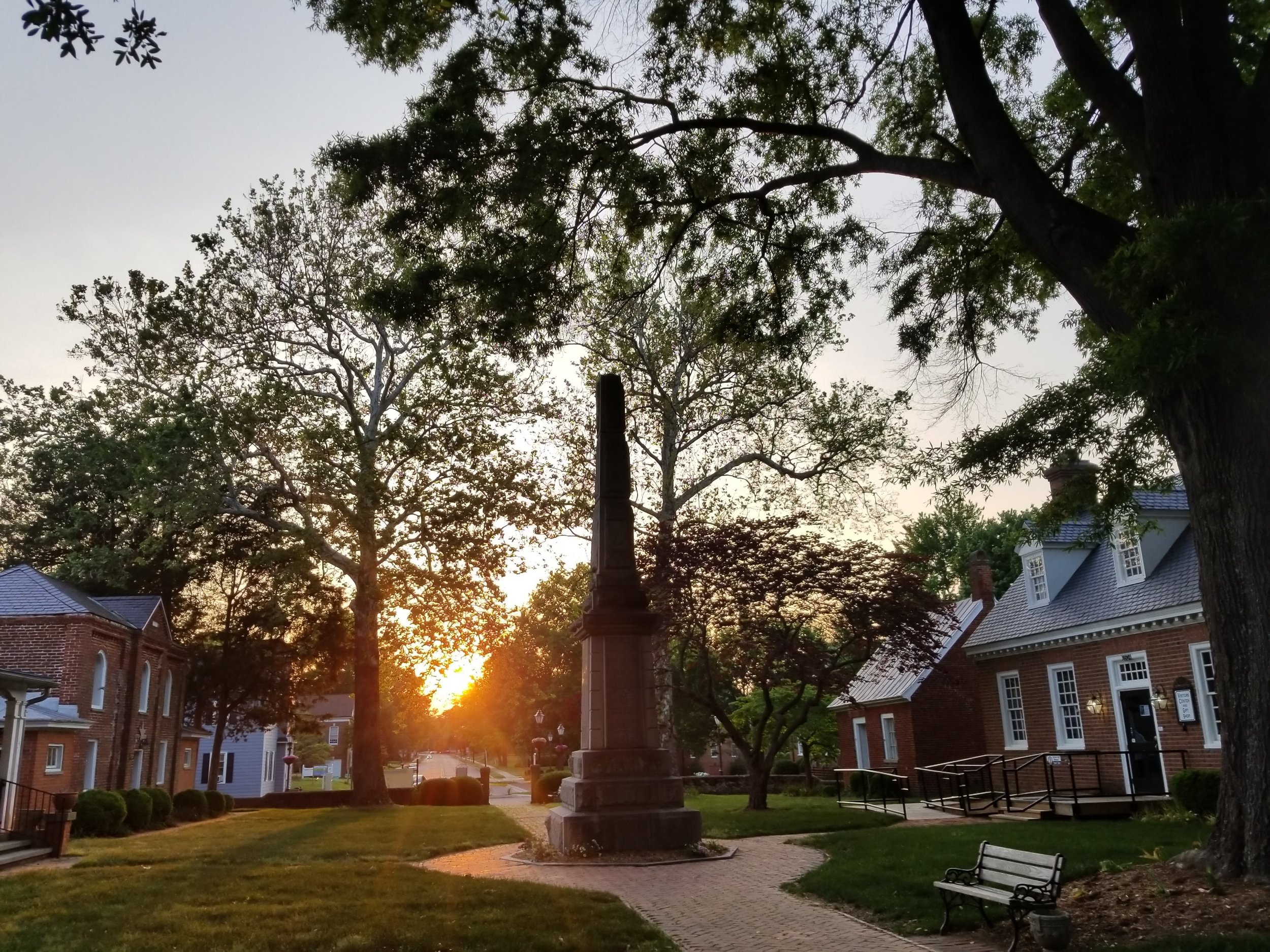
Our History
With a historic courthouse square dating back to the late 1600’s, Gloucester Main Street is rich in history.
Our History
With a historic courthouse square dating back to the late 1600s, Gloucester Main Street is rich in history. During the mid-eighteenth century, Edward Gwynn conveyed a six-acre tract to the people of Gloucester County to be the site of a new courthouse and prison. Shown on a plat dating 1774, the “Town of Botetourt” (Gloucester Main Street) consisted of a courthouse, prison, new ordinary (Botetourt Hotel), two stores, a clubhouse, and the old ordinary.
That same year, Gloucester County citizens resolved to refrain from the importation of English goods and authorized a tea party in the York River in support of Virginia’s boycott of the same. In 1775, the Gloucester Militia was organized at the Court House and numbered 850 when they defeated Lord Dunmore at Gwynn’s Island a year later. Gloucester Town/Tyndall’s Point/Gloucester Point was the location of the second British surrender in 1781, one hour after the surrender at Yorktown.
Gloucester saw little development in the first half of the nineteenth century. However, the steamboat arrived in 1854, and a regular delivery system for goods and mail was established, activity in Gloucester began to pick up.
On May 7, 1861, the Gloucester Militia fired the first shots of the Civil War in Virginia as the small, armed steamer, True Blooded Yankee, attempted to enter the York River. Artillery companies from Richmond provided guns for the fort’s five bastions.
The fortification was abandoned by the Confederates and was in Union control by May 1862. Gloucester’s Militia disbanded and many troops joined the Army of Northern Virginia. A “partisan” company of those too young or old for the militia guarded Gloucester, seeking to save farms and interrupt enemy communication. Union troops, however, still burned the village store, mills and barns, and the county jail.
From 1800-1900, with a stable county population of between 10,000 and 11,000, there was little growth beyond the number of buildings recorded on late-eighteenth-century plats. However, the nineteenth century did see a considerable shift in plantation sizes, agricultural production, and the types of buildings being used and constructed.
Due in part to the establishment of the Bank of Gloucester in 1906, Gloucester’s Main Street really began to develop in the early twentieth century. In just the first twenty-five years, agricultural fairs, jousting tournaments, the establishment of a Coca-Cola bottling works, ice delivery, and electrification changed the quality of life for Gloucester County residents.
Although the first daffodil business was established in Gloucester County in the 1890s, it was not until 1930 that Gloucester was anointed the Daffodil Capital of America. In 1938, the Daffodil tour was established to complement the Historic Garden Week tours the Garden Club of Virginia began in 1920.
In 1952 the Coleman Bridge connected Gloucester County to Hampton Roads and the county saw a rapid rise in population. By 1990, Gloucester County had become one of the nation’s fastest-growing counties. National chains began to replace local businesses along Route 17, new residential developments were built, and the Walter Reed hospital expanded. In 2005 the Main Street Preservation Trust was established to support small businesses and enhance the downtown area, efforts that were soon complemented by the establishment of the Gloucester Main Street Association. In 2016 Gloucester officially became a Virginia Main Street Community, a designation granted to towns that adhere to guidelines and standards designed to restore and enhance small communities oriented around their downtown commercial areas.
Today, Gloucester Village boasts storefront and streetscape improvements, providing a picturesque setting for boutique shops and restaurants along Main Street. With themes of yesteryear mixed with the energy of today, the Gloucester Village functions as it did over 300 years ago….as the hub and center for Gloucester. It beckons to be re-discovered by you.




